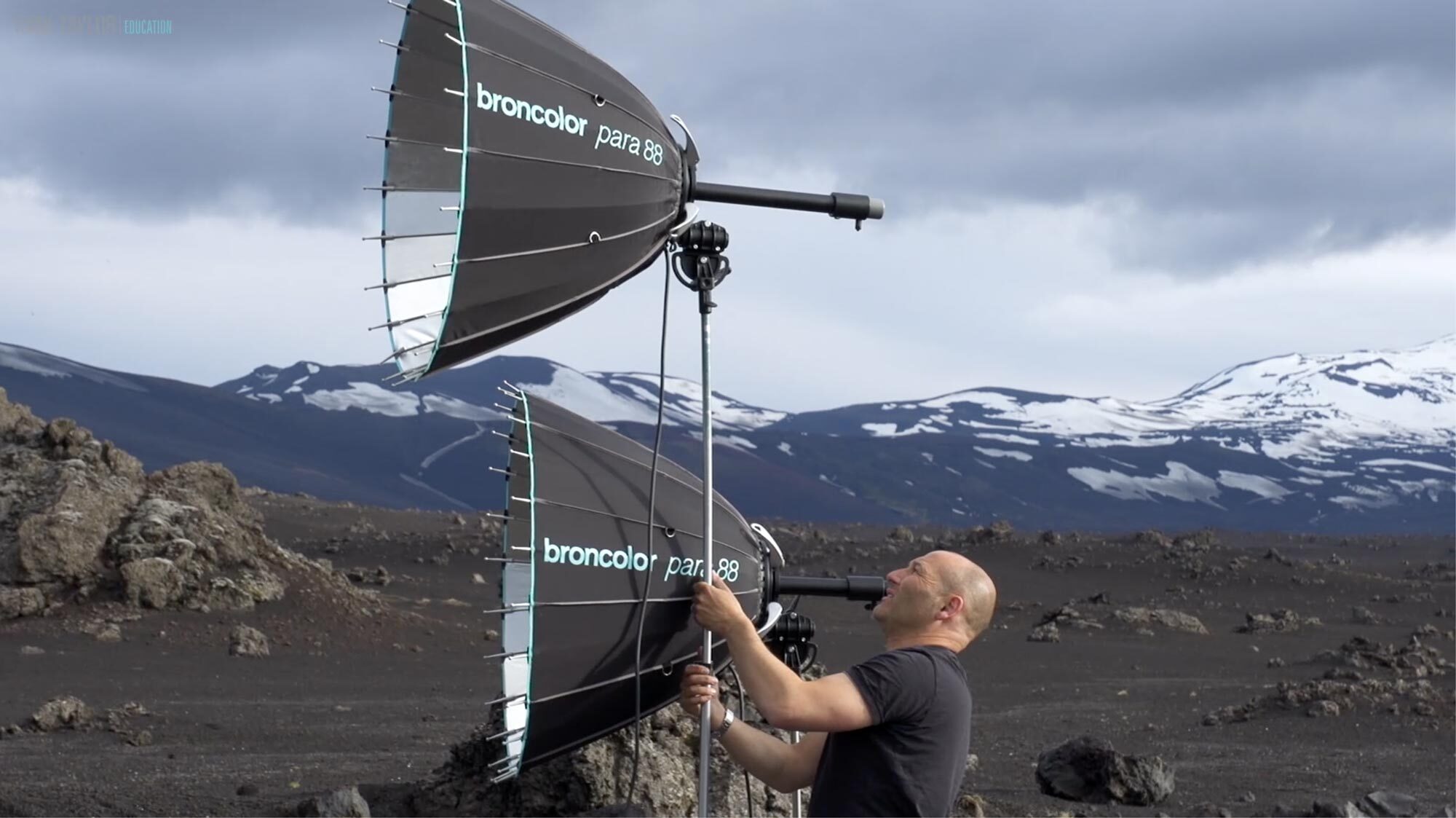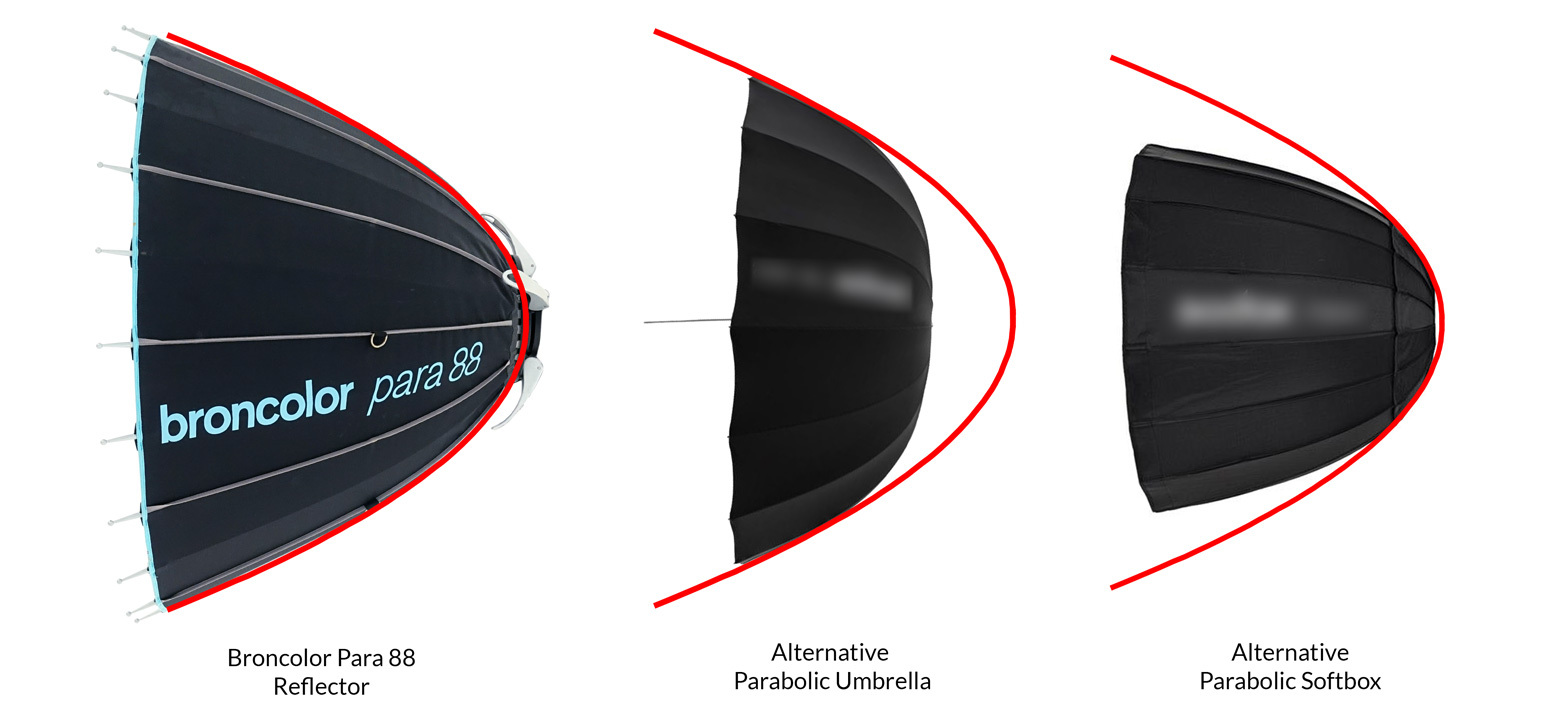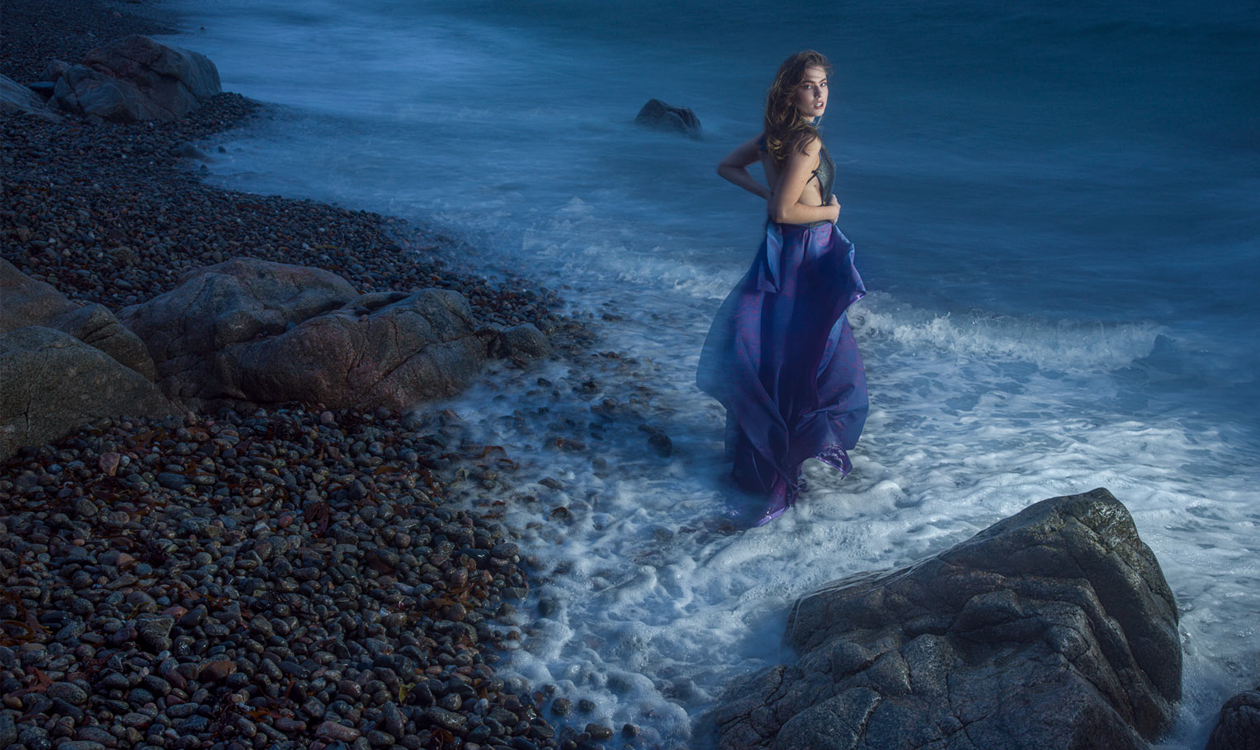The Magic of Parabolic Lighting
Posted by Karl Taylor on Sep 17th 2021
As a professional photographer, one of the most common questions I get asked is “If you could have just one lighting modifier, what would you choose?” And my answer is always the same — “The Para 133”.
When it comes to lighting modifiers, there’s no shortage of options. However, I find that few offer the quality and versatility of parabolic lighting.
Parabolic lighting is most popular when it comes to beauty and fashion work, and not without good reason. But what is parabolic lighting and what is it that makes these modifiers so special?

What is a parabolic light?
While there are a number of convoluted and lengthy definitions of the term parabola, in it’s most basic form it simply refers to a u-shaped line that is symmetrical across the line of symmetry.
The shape of the umbrella means you can change the focus or strength of the light, depending on where you position the lamp head inside the reflector. When the light is further out a softer, less focussed beam of light is produced. By moving the light closer to the centre of the umbrella one can achieve a more focused beam of light with much greater contrast.
True parabolic lights, such as the broncolor system I use, produce a beautiful, sparkly light which is very flattering when it comes to skin tone and ideal for bringing out the detail in textures. The shape and reflective properties of the modifier allow for great control over the focus and contrast produced by the light — one of the main advantages of these modifiers.
I explain and demonstrate all of this in my ‘Understanding parabolic lighting’ live show, where you can see each of these concepts clearly demonstrated. I also put this theory into practice in my Beauty lighting comparison video, where I demonstrate the results of the different size para’s.

The myth of ‘parabolic umbrellas’
There are many modifiers on the market that claim to be ‘parabolic’ in shape, but very few of them actually are!
For
any modifiers to be truly parabolic, it has to be a very specific
shape: that of a parabola. A parabola can simply be defined as a curve
where any point (P) is at an equal distance from a fixed point (the
focus) and a fixed straight line (the directrix).

This specific shape results in a very particular output of light. Any
light that originates from a point source at the focus point will
reflect outward parallel to the central axis of symmetry, which is what
allows parabolic reflectors to produce their characteristic light.
It's
worth noting here that it's essential that the light can escape from
its source sideways as well as forward. This is why flat-fronted lights
such as speedlites can’t work in parabolic modifiers, because the light
is unable to emanate perpendicular to its forward-facing direction.

If you see a ‘parabolic’ modifier, make sure to check that it truly is
what it says it is. I use the broncolor paras, which I know truly
conform to the parabolic shape. The quality of light they produce is
fantastic, and, as I’ve already explained, I use them for a lot of my
work.
A ‘parabolic’ modifier that is not a true parabola means that the physics of reflectance just don’t work as well.
The
other type of modifier which can produce a similar light to a parabolic
reflector is a Fresnel lens, we do use these in photography and studio
lighting but they as they need to be constructed from glass they would
be far too heavy, cumbersome and expensive to use at the same scale as
the larger paras. In fact the only place you will see fresnel lenses
that big are in lighthouses where the light can be focused from it’s
point light source very precisely forwards and projected many miles.

Advantages of parabolic studio lights
The
versatility mentioned previously is one of the main advantages of
parabolic lighting modifiers. The ability to adjust the light means you
can achieve a level of control that isn't really possible with any other
modifier.
The relatively narrow beam of light that can be
produced by paras is a further advantage. The ability to focus the beam
means you can safely light a subject using a para without influencing
the entire shot and create illumination that is concentrated to a
defined area with a very attractive fall off.
When the light
source is further from the centre of the para we arrive at a very
interesting lighting effect, where the centre of the para is no longer
illuminated and only the outer rim of the para is reflecting the light
source. The 24 individual hard reflections in a perfect circle means we
are able to surround the subject with a crisp but soft three-dimensional
light. By moving the light source slightly back into the parabola we
can partly illuminate the centre too or fully illuminate only the centre
by moving the light much closer in.
The larger the para relative
to the subject means even more interesting results can be achieved as
we can have a hard light effect combined with the softness dictated by
the larger size — somewhat of an interesting paradox in lighting terms.
The largest paras are often used directly behind the photographer so
that the light wraps evenly towards and onto the subject, creating
effective sculpting of cheek bones, jaw line or any area of the body
that falls rapidly away from the camera position.
Even greater
control over the output is possible simply by adjusting the angle of the
reflector or the distance from the subject. There is also the option to
attach diffusers or grids to further influence the light output. These
vary, offering anything from a slightly diffused but focused light to
that of a totally diffused softbox.
The symmetry of the parabolic
shape means the energy from the light is reflected very specifically.
The light from the point of focus comes out parallel to the axis of
symmetry and is therefore a very efficient way of reflecting light.
Because it is so efficient, the para allows for light to be cast over
great distances. This makes them well suited to working on location, as
you'll be able to see in our Fashionscape course and our ‘Seascape
fashion photography' class.
This precise control allows you to
achieve a number of different results using just one light; essentially
you have a complete lighting system neatly bundled into one modifier. As
explained earlier the only other modifier to work in a similar way are
fresnel lenses, but these would be far too big and expensive to use at
the same scale as paras.
This article covers only a small portion of Karl Taylors
information and techniques relating to parabolic modifiers and other
types of studio lighting. If you’d like to take that next step into a
more advanced understanding of lighting then sign up to Karl Taylor Education, where you can access everything for one low price.
